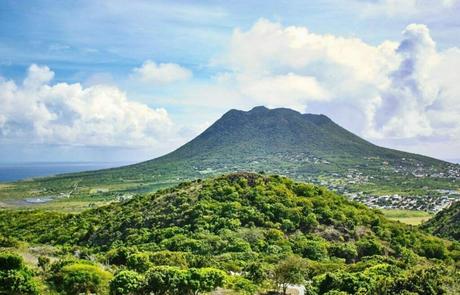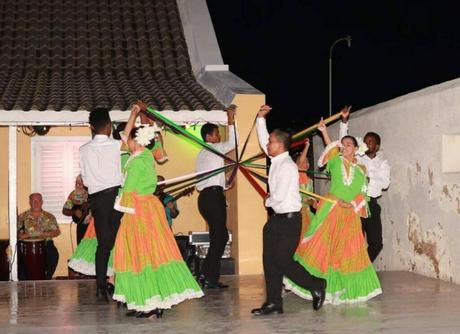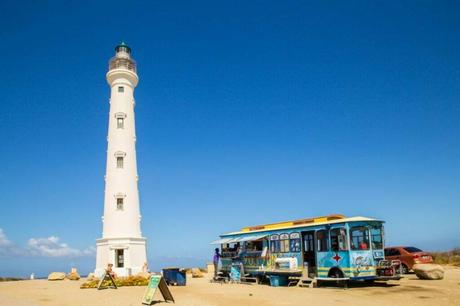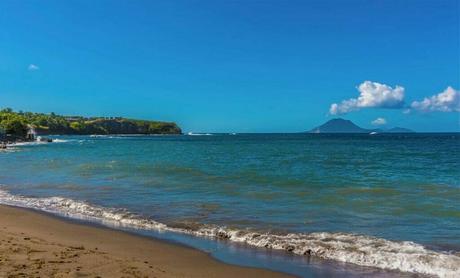Aruba and St. Eustatius, two contrasting Caribbean destinations, offer travelers an array of captivating experiences.
Aruba’s arid landscape and breathtaking beaches, like Eagle Beach and Palm Beach, set the stage for water sports enthusiasts and sun-seekers. The island’s Arikok National Park, with its wild terrain and hidden caves, promises adventure and exploration.
Meanwhile, St. Eustatius entices nature lovers with its verdant landscapes and the magnificent Quill volcano, harboring a lush rainforest-filled crater. Although its beaches may lack the typical white sands, the island’s black sand beaches, formed by volcanic activity, possess a unique allure.
LocationCaribbeanCaribbean
GeographyIslandIsland
LanguageDutch, Papiamento, EnglishDutch, English
GovernmentAutonomous country within the Kingdom of the NetherlandsSpecial municipality of the Netherlands
CurrencyAruban florin (AWG)United States Dollar (USD)
TourismMajor tourist destination, known for its beautiful beaches and resortsEmerging tourist destination, known for its historical sites and natural beauty
EconomyTourism, oil refining, offshore financeTourism, petroleum storage, agriculture
CultureInfluences from Dutch, Caribbean, and indigenous culturesInfluences from Dutch and Caribbean cultures
AttractionsNatural Bridge, Arikok National Park, Oranjestad (capital city)Quill volcano, Historical Fort Oranje, The Quill/Boven National Park
ClimateTropical, with constant trade windsTropical, with constant trade winds
Dive into the vibrant underwater worlds, indulge in rich cultural heritage, and embrace the distinctive flavors of these captivating islands, each offering its own charm and appeal.
Geographic Features: Contrasting the Natural Beauty of Aruba and St. Eustatius

Aruba, a constituent country of the Kingdom of the Netherlands, boasts a unique geography that lends itself to a myriad of natural wonders. Known for its arid landscape and cacti-dotted plains, the island is adorned with spectacular beaches such as Eagle Beach and Palm Beach, known for their white sands and clear turquoise waters. However, there’s more to Aruba than just its coastline. Arikok National Park, with its rugged terrain, native fauna, and striking caves, is a testament to the island’s wild side.
On the other hand, St. Eustatius, colloquially known as Statia, is a tale of verdant landscapes and volcanic features. The Quill, a dormant stratovolcano, is a crowning jewel that’s visible from any point on the island. Its rainforest-filled crater and diverse ecosystems make it a must-visit for nature lovers. Beach-wise, Statia may not boast the same white sandy expanses as Aruba, but its unique black sand beaches formed by volcanic activity offer a different kind of allure.
Water sports enthusiasts will find Aruba’s constant trade winds to be a paradise for wind and kite surfing. The island’s southern coast is fringed with coral reefs, providing vibrant underwater landscapes for scuba diving and snorkeling. Meanwhile, Aruba’s northern coast, featuring the Natural Pool and rugged terrain, caters to adventurous hikers and off-road explorers.
In comparison, St. Eustatius offers an underwater wonderland for divers, with vibrant coral reefs, shipwrecks, and marine life at the St. Eustatius Marine Park. Birdwatchers will find solace in the gardens of the St. Eustatius National Parks Foundation, while hikers can take on the challenging trek up the Quill for panoramic island views.
Cultural Heritage: Exploring the Unique Traditions of Aruba and St. Eustatius

Aruban culture is a unique blend of indigenous and colonial influences. Locals, known as Arubans, predominantly speak Papiamento, a Creole language with African, Portuguese, Dutch, English, and Spanish elements. Key cultural events include Carnival, a grand annual celebration filled with music, dance, and vibrant costumes, and Dera Gai (St. John’s Day), a traditional harvest festival. The Bon bini Festival, held weekly, offers a glimpse into local music, dance, and crafts.
Conversely, St. Eustatius, despite its small size, holds a rich cultural heritage. It’s a melting pot of African, Amerindian, European, and Asian influences, creating a unique Statian culture. The island’s official language is Dutch, but English is widely spoken. Statia Carnival and Statia Day are major cultural events on the island, celebrating their history, freedom, and unity with lively parades and events.
Aruba’s art scene is a colorful fusion of styles, as seen in the vibrant murals of San Nicolas, also known as ‘Aruba’s Sunrise City‘. This city, once renowned for its oil refinery, is now known for its art scene, characterized by a plethora of murals depicting the island’s history and culture.
In contrast, Statia’s cultural preservation is evident in its well-preserved historical architecture. The Dutch Reformed Church, Fort Oranje, and the remains of the first synagogue in the Americas testify to the island’s rich multicultural past.
Tourism and Recreation: Comparing the Leisure Activities in Aruba and St. Eustatius

Aruba is a well-established tourist hotspot. Its bustling hotel zone is lined with world-class resorts, casinos, and restaurants. With an array of water sports, golf courses, spas, and shopping venues, there’s no shortage of recreational opportunities. The island is known for its nightlife, featuring beach bars, nightclubs, and live music venues.
St. Eustatius, on the contrary, offers a more laid-back tourism scene. The island’s tranquillity is its prime selling point, catering to those seeking a quiet retreat. Hiking, diving, and bird-watching are popular activities. Tourism facilities are fewer but hold an authentic charm, with small hotels and guesthouses providing a cozy stay.
As a more developed tourist destination, Aruba offers a wider variety of tours and excursions. Whether it’s a guided tour of the Arikok National Park, a submarine excursion exploring the marine life, or a sunset sailing trip, there’s something for everyone.
St. Eustatius, in comparison, emphasizes eco-tourism. The island encourages visitors to participate in sustainable practices, like guided tours of the Quill National Park, diving tours that promote reef conservation, and historical walking tours through the island’s capital, Oranjestad.
Historical Significance: Unveiling the Rich Past of Aruba and St. Eustatius

Aruba’s history is fascinating, marked by Amerindian, Spanish, and Dutch influences. The island’s Amerindian heritage is preserved at sites like the Ayo and Casibari Rock Formations, which hold ancient petroglyphs. The California Lighthouse, named after a shipwreck off Aruba’s coast, stands as a beacon of the island’s maritime history.
Meanwhile, St. Eustatius holds a particularly interesting place in history. Once known as the ‘Golden Rock‘, it was a major trading hub in the 17th and 18th centuries. The island is famously known for the ‘First Salute’, when it became the first foreign power to recognize American independence by saluting an American naval vessel in 1776.
Aruba’s history is brought to life at the Fort Zoutman Historical Museum in Oranjestad, where artifacts and exhibits recount the island’s past. Similarly, Bushiribana Gold Mill Ruins stand as a remnant of a short-lived gold rush in the 19th century.
In contrast, much of St. Eustatius’ history is under the sea, with over 200 shipwrecks resting in its waters. On land, historic Lower Town, a submerged section of the old capital due to volcanic activity, and the ruins of the Dutch East India Company Warehouse, testify to the island’s vibrant past.
Cuisine and Local Delights: Sampling the Flavors of Aruba and St. Eustatius

Aruban cuisine is a melting pot of flavors, influenced by Amerindian, African, Dutch, and Spanish cuisines. Signature dishes include Keshi Yena (stuffed cheese), Pastechi (meat-filled pastry), and Aruban seafood soup. Aruba’s food scene caters to all tastes with high-end restaurants, local eateries, and food trucks serving everything from international to local cuisines.
In contrast, St. Eustatius offers a more traditional Caribbean dining experience. With influences from Creole, Dutch, and West African cuisines, the local food is simple but flavorful. Fresh seafood, fruits, and vegetables are the staple of Statian diet, with dishes like goat stew and Johnny cakes being local favorites.
Aruba’s drink scene is equally diverse, with locally made Balashi beer and coecoei, a red liqueur used in the island’s signature cocktail, Aruba Ariba. Local coffee and fresh fruit smoothies are also popular.
Statia’s local rum, the Golden Rock Spiced Rum, is a must-try, as is the traditional bush tea made from local herbs. Fresh fruit juices are also a common accompaniment to meals on this island.
Infrastructure and Development: Contrasting the Modernity of Aruba and St. Eustatius

Aruba stands out for its modern infrastructure. High-quality roads, a reliable public transportation system, and advanced healthcare facilities make it an easily navigable and comfortable destination for tourists. The Queen Beatrix International Airport and the Port of Oranjestad are bustling hubs for international travel and commerce.
In contrast, St. Eustatius retains its rustic charm. The island’s infrastructure is basic, with one main road linking the different areas. The F.D. Roosevelt Airport and the Port of Oranjestad (named after the Dutch Royal Family, like its Aruban counterpart) cater to the island’s travel and commerce needs, albeit on a smaller scale.
Aruba’s sustainable practices are visible in its infrastructure, with a wind farm contributing to its energy supply and a desalination plant providing fresh water. The island’s advanced telecommunication network ensures high-speed internet and good cellular coverage.
St. Eustatius, on the other hand, is progressing towards sustainable development. It aims to become energy self-sufficient using renewable sources. The St. Eustatius Utility Company has made strides in implementing solar power, a testament to the island’s commitment towards a greener future. The island’s telecommunication services are adequate, although not as widespread as in Aruba.
FAQ

Is Aruba still a part of the Netherlands?
Aruba is a constituent country of the Kingdom of the Netherlands. Since 1986, it has maintained its separate status within the Kingdom, with its own government and a degree of autonomy. While it shares a close relationship with the Netherlands, including ties in areas such as defense and foreign affairs, Aruba is not considered a part of the European Union.
What is Sint Eustatius known for?
Sint Eustatius, commonly referred to as Statia, is known for its rich historical significance. In the 17th and 18th centuries, it was a major trading hub, earning the nickname “Golden Rock.” Statia played a pivotal role in the American Revolution when it became the first foreign power to salute an American naval vessel, recognizing American independence. Today, the island’s well-preserved historical architecture, submerged Lower Town, and numerous shipwrecks make it a fascinating destination for history enthusiasts and divers.
What are the 6 Dutch islands in the Caribbean?
The six Dutch islands in the Caribbean are Aruba, Bonaire, Curaçao, Saba, Sint Eustatius (Statia), and Sint Maarten. Aruba, Curaçao, and Sint Maarten are constituent countries within the Kingdom of the Netherlands, while Bonaire, Saba, and Sint Eustatius are special municipalities, also known as “BES islands.” These islands each have their own unique character, offering diverse landscapes, cultural heritage, and recreational opportunities for visitors to explore.

